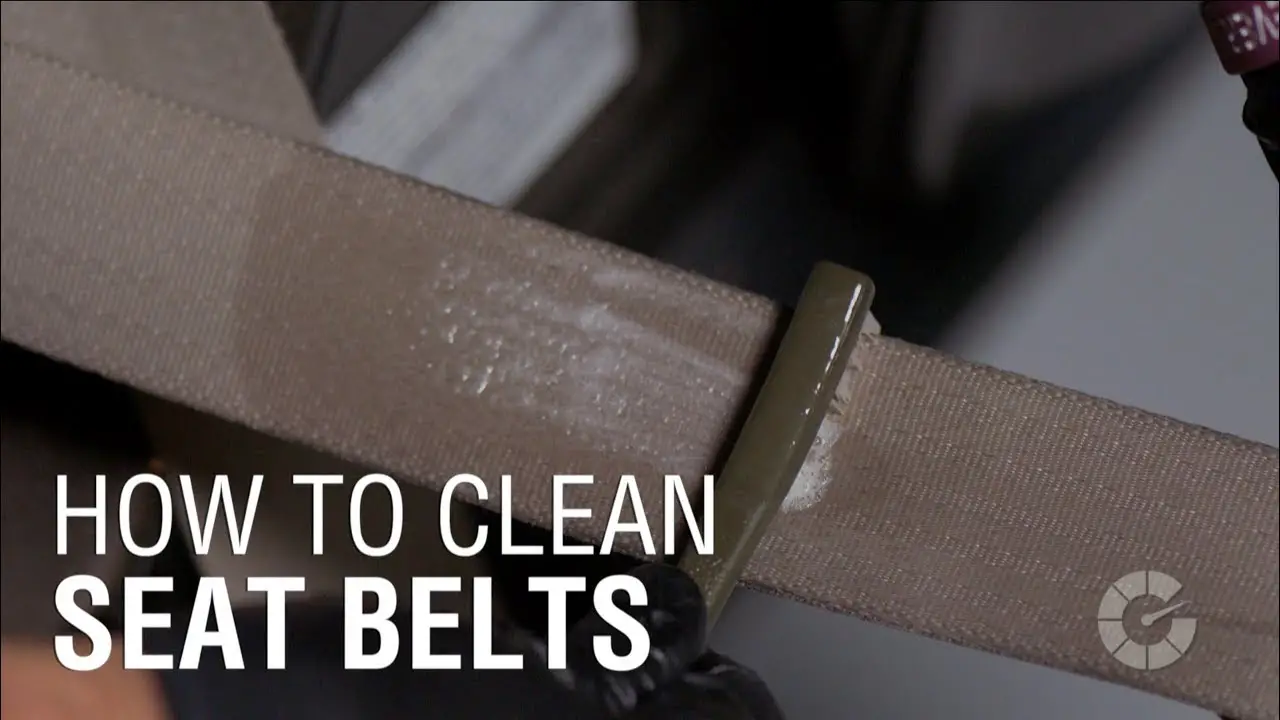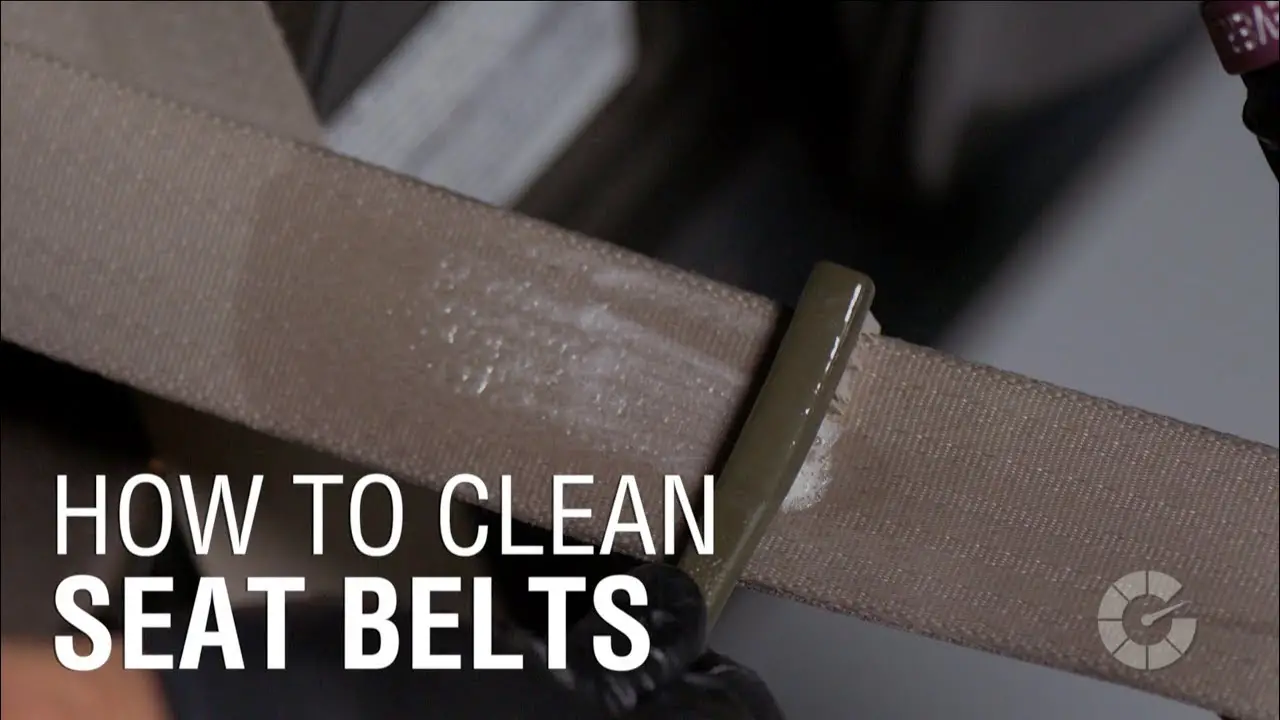Seat belts are one of the most important safety features in our cars. They keep us secure during sudden stops or accidents, reducing the risk of serious injuries. But have you ever thought about how dirty seat belts can get over time? From spilled drinks to food crumbs, seat belts can accumulate a lot of dirt and grime. In this article, we’ll show you how to clean your seat belts and keep them looking as good as new.
Cleaning your seat belts is important not just for aesthetic reasons, but also for your safety. Dirty seat belts can weaken over time, making them less effective in protecting you during an accident. With our step-by-step guide, you’ll learn how to clean your seat belts safely and effectively, ensuring that they remain in top condition for years to come. So, let’s get started!
- Remove the seat belt from the car and extend it fully.
- Wipe the seat belt with a damp cloth to remove any loose dirt or debris.
- Mix a solution of mild detergent and warm water.
- Dip a clean cloth into the solution and gently rub the seat belt.
- Rinse the seat belt thoroughly with clean water and hang it up to dry completely.

How to Clean Seat Belts: A Step-by-Step Guide
Seat belts are essential safety features in any vehicle, but they can also accumulate dirt, grime, and stains over time. A clean seat belt not only looks better but also functions better. In this article, we’ll provide you with a step-by-step guide on how to clean seat belts effectively.
Materials Needed
Before we start cleaning the seat belts, here are the materials you’ll need:
- Mild detergent or upholstery cleaner
- Bucket of warm water
- Clean white cloth
- Toothbrush or soft-bristled brush
- Vinegar or baking soda (optional)
Step 1: Remove any debris or dirt
Start by removing any debris or dirt from the seat belts. Use a cloth or a soft-bristled brush to gently brush off any loose dirt and debris. Be careful not to damage the seat belt material or the mechanism.
Step 2: Mix the cleaning solution
Next, mix a mild detergent or upholstery cleaner with warm water in a bucket. Follow the instructions on the cleaner’s label for the right amount of cleaner to use. You can also add a tablespoon of vinegar or baking soda to the mixture to help remove any stubborn stains.
Step 3: Apply the cleaning solution
Dip a clean white cloth in the cleaning solution and wring out any excess liquid. Gently rub the cloth over the seat belt, starting from one end and working your way to the other end. Be sure to cover the entire seat belt, including the edges and the mechanism.
Step 4: Scrub the stains
For any stubborn stains, use a toothbrush or a soft-bristled brush to scrub the area gently. Be careful not to damage the seat belt material, and work in a circular motion to lift the stain.
Step 5: Rinse the seat belt
Once you’ve cleaned the entire seat belt, rinse it with clean water. Use a clean cloth or sponge to wipe away any excess water and soap residue.
Step 6: Dry the seat belt
Hang the seat belt up to dry, or lay it flat on a clean towel. Avoid exposing the seat belt to direct sunlight or heat, as this can damage the material. Allow the seat belt to air dry completely before using it.
Step 7: Repeat the process (if necessary)
If the seat belt is still dirty or stained after the first cleaning, repeat the process until the seat belt is clean.
Step 8: Condition the seat belt (optional)
If you want to condition the seat belt, apply a leather conditioner or a fabric protectant to the seat belt after it has dried completely. Follow the instructions on the product label for the right amount to use.
Step 9: Check the seat belt mechanism
Before using the seat belt, check the mechanism to ensure that it is working correctly. Pull the seat belt out and retract it back in a few times to make sure it is functioning correctly.
Step 10: Benefits of cleaning seat belts
Cleaning your seat belts regularly has several benefits. Firstly, it helps to remove any dirt, grime, and stains that can accumulate over time. Secondly, it helps to prevent any unpleasant odors from developing in your vehicle. Finally, it helps to ensure that your seat belts function correctly and provide the necessary safety in case of an accident.
Conclusion
Cleaning your seat belts is essential to maintain their appearance and functionality. By following these simple steps, you can clean your seat belts effectively and ensure that they provide the necessary safety when you need them. Remember to check the seat belt mechanism regularly and condition the seat belt if necessary to prolong its lifespan.
Frequently Asked Questions
Seat belts are an essential safety feature in any vehicle. However, over time, they can become dirty and stained. Here are some commonly asked questions about how to clean seat belts.
How often should you clean your seat belts?
It is recommended that you clean your seat belts at least once a year. However, if you have any spills or stains on your seat belts, it is best to clean them as soon as possible. Dirty seat belts can be a breeding ground for bacteria and can also reduce the effectiveness of the seat belt.
To clean your seat belts, you can use a mild detergent and warm water. Be sure to let them air dry completely before using them again.
Can you put seat belts in the washing machine?
It is not recommended to put your seat belts in the washing machine. The machine can damage the seat belt material and compromise its safety. Instead, you should hand wash your seat belts using a mild detergent and warm water.
If you have any particularly stubborn stains, you can use a soft-bristled brush to scrub the area gently. Be sure to rinse the seat belts thoroughly and let them air dry completely before using them again.
Can you use bleach to clean seat belts?
No, bleach should not be used to clean seat belts. Bleach can weaken the seat belt material and compromise its safety. Instead, you should use a mild detergent and warm water to clean your seat belts.
If you have any stains that are particularly difficult to remove, you can try using a stain remover specifically designed for fabric. Be sure to test the stain remover on a small, inconspicuous area of the seat belt first, to ensure that it does not damage the material.
Can you use a vacuum cleaner to clean seat belts?
Yes, you can use a vacuum cleaner to clean your seat belts. A vacuum cleaner can help to remove any loose dirt and debris from the seat belts.
However, if you have any stains on your seat belts, you will need to use a mild detergent and warm water to remove them. Be sure to let the seat belts air dry completely before using them again.
How do you prevent seat belts from getting dirty?
One way to prevent seat belts from getting dirty is to avoid eating or drinking in the car. Spills and crumbs can quickly accumulate on the seat belts and cause stains.
You can also try using seat belt covers to protect the seat belts from dirt and stains. These covers can be easily removed and washed, ensuring that your seat belts stay clean and hygienic.
How To Clean Seat Belts | Autoblog Details
In conclusion, cleaning your seat belts is an essential task that should be included in your regular car maintenance routine. Not only does it improve the appearance of your car’s interior, but it also ensures the safety of all passengers.
By following the simple steps mentioned above, you can effectively clean your seat belts without damaging them. Remember to use a mild detergent and avoid using bleach or harsh chemicals.
Now that you know how to clean your seat belts, there’s no excuse for neglecting this important task. Take the time to give your seat belts the attention they deserve and enjoy a clean and safe ride every time you hit the road.

